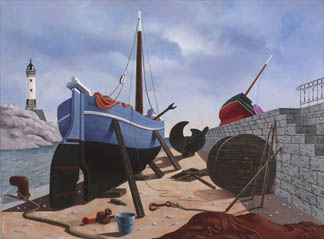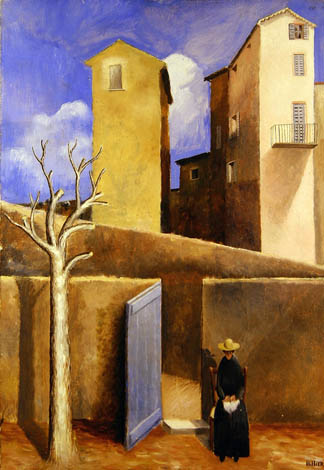Published 13/05/2010
Surreally restrained With their contemplative stillness and cool austerity, Tristram Hillier’s paintings present a dreamlike, post-apocalyptic world in which human beings are largely absent. English Surrealism is seen at its elegantly restrained best. Recognition of Tristram Hillier’s unique contribution to 20th century British art is long overdue and we are pleased to be able to present over 70 high resolution images of his paintings from collections all over the world with Bridgeman clearing copyright on behalf of the artist’s estate. |
|
|
The Slade School of Art sharpened Hillier’s natural ability as a draughtsman, and throughout his life he maintained a rigorous approach to drawing. Membership of Paul Nash’s Unit One Group brought Hillier into contact with the English Surrealists, particularly Edward Wadsworth, with whom he drew and painted around the coast of Normandy. His close links with the Surrealist Movement as well as his deep admiration for the early Italian and Flemish masters established Hillier’s artistic direction. After the war he settled with his family in Somerset, where he worked in artistic isolation until his death in 1983. Hillier’s classical, timeless images, full of steely light and ominous shadows, have a unique place in the history of British 20th century art. |




